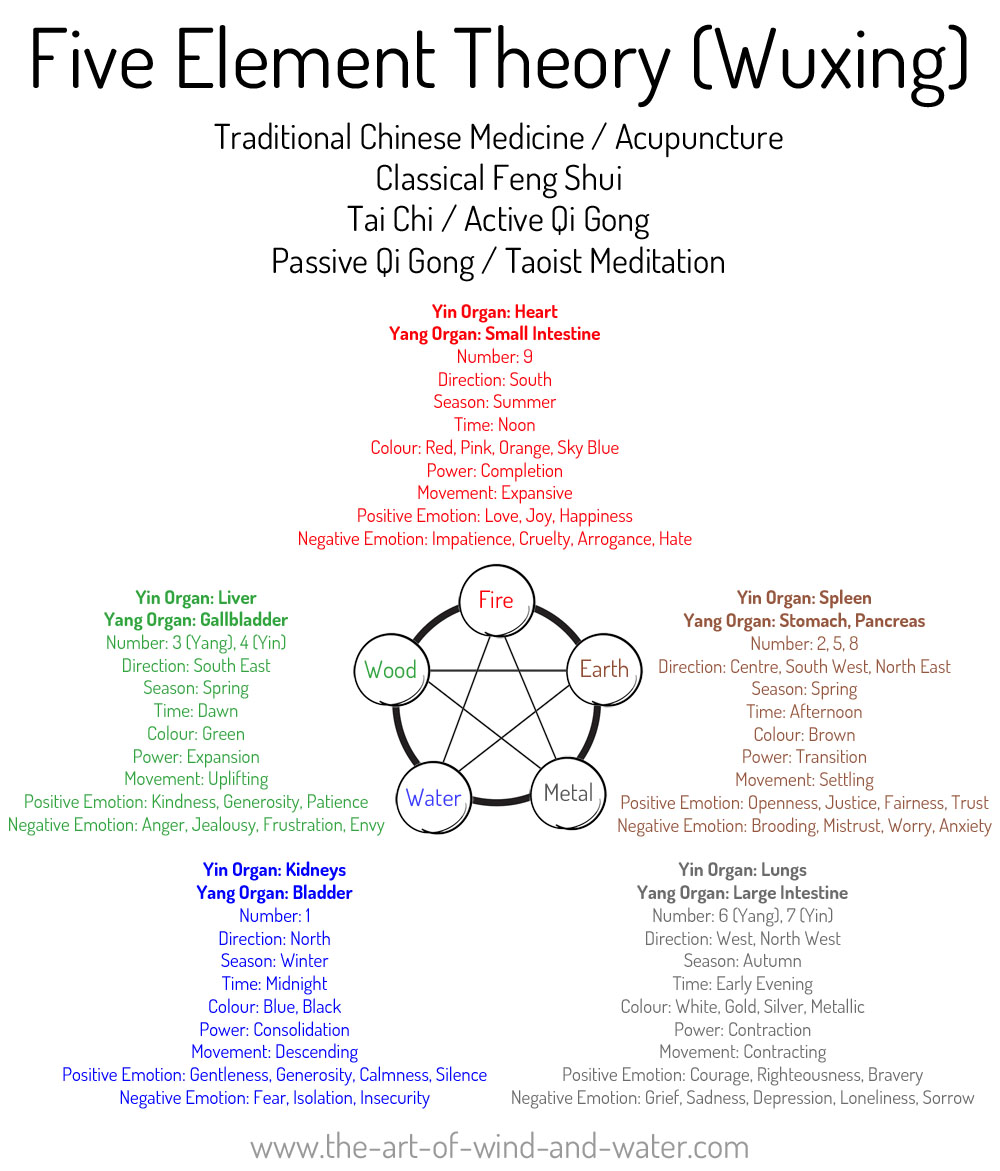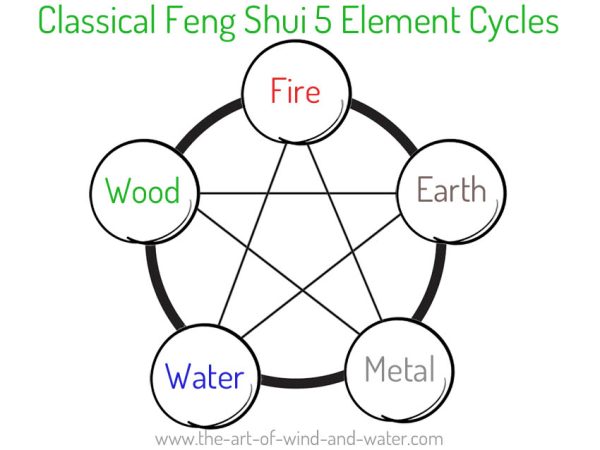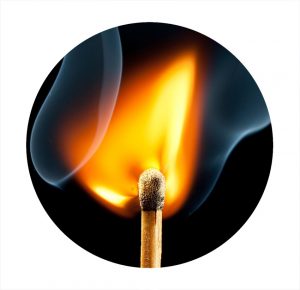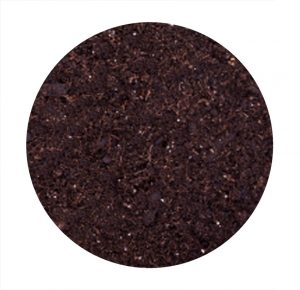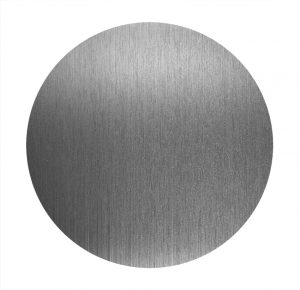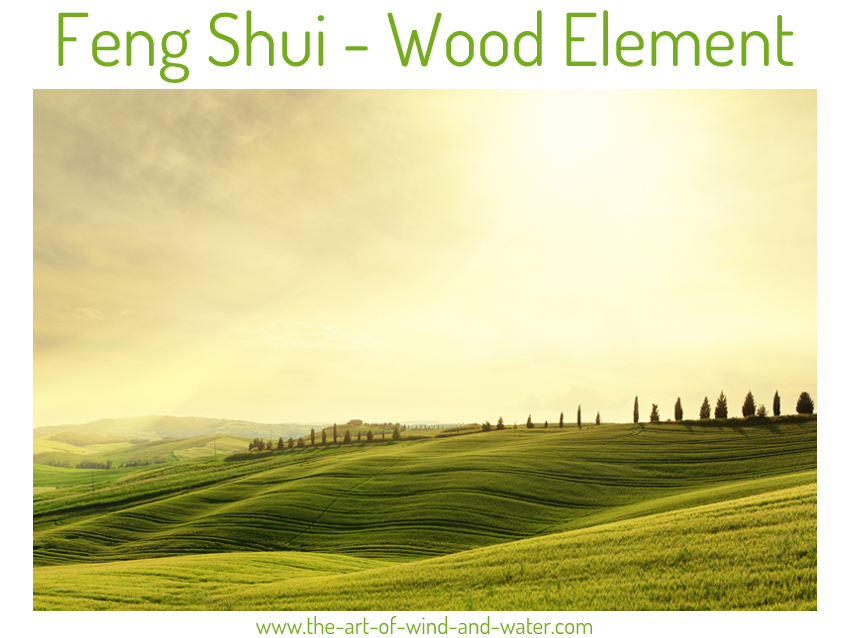
The Wood Element
Classical Feng Shui
Also known as ‘The Five Transformations’, the five elements are each associated with an aspect of time and the state. Within your home the elements can be used with the Chinese Trigrams from the I Ching when looking at any missing areas in the plot or building shape. They can also be used with the Flying Stars when using the Lo Pan Compass to analyse the interior, they are then applied through a combination of materials, shape and colour. The following table provides a breakdown of the wood element; the essence, meaning & application in Classical Feng Shui and Taoist philosophy.
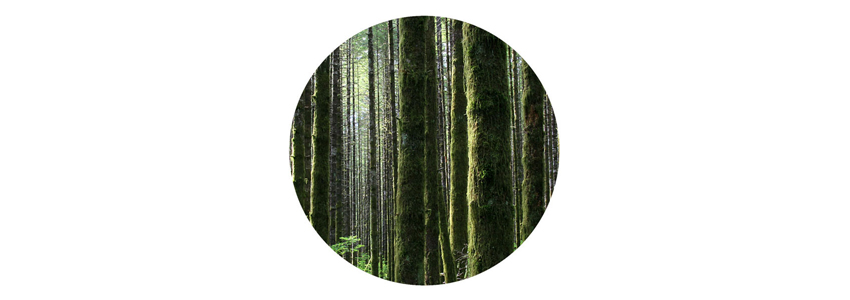
| Five Element Theory | The Wood Element |
|---|---|
| Associations | Awakening, Growth, Activity, Upward, Outward ,New Beginnings, Creation, Nourishment |
| Colours | Green |
| Season | Spring |
| Time | Dawn |
| Direction | East, South East |
| Celestial Animal | Dragon |
| Yin or Yang | Yin, Feminine |
| Movement | Uplifting |
| Power | Expansion |
| Flavour | Sour |
| Sound | Crash |
| Weather | Windy |
| Climate | Windy |
| Age | Birth |
| Stage of Life | Birth |
| Organ | Liver, Gallbladder |
| Exterior | Plants, Trees, Shrubs, Tall Pagodas, Watchtowers, Obelisks, Pillars |
| Interior | House Plants |
| Material | Living Wood |
| Shape | Rectangle |
| Form | Columns, Tall, Vertical, Upright, Oblong, Pillars, Chimneys, Skyscrapers |
| Building Material | Wooden |
| Building Shape | Tall rectangle |
| Roof Shape | Tall |
| Building Activity | Students, School, Offices, Local council, Government offices |
| Images | Forests, Countryside, Gardens, Trees, Landscape |
| Colours | Green, Blue Green |
| Yin (Feminine) | Unhealthy Plants, Bamboo, Grass |
| Yang (Masculine) | Healthy Plants, Oak |
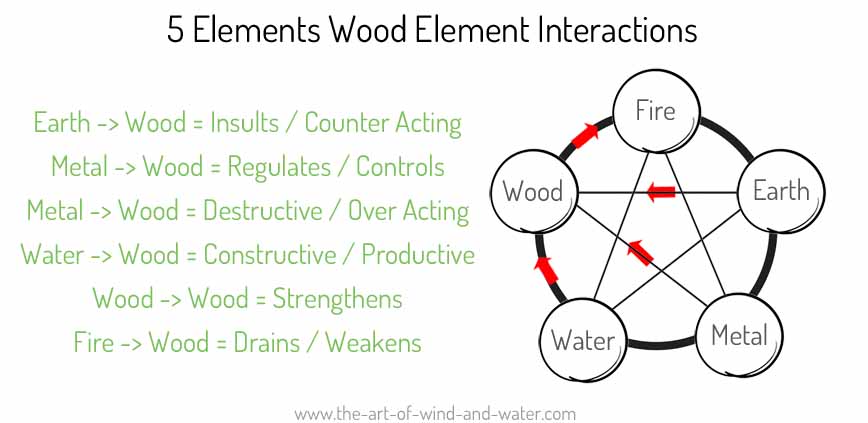
The 5 Element Cycles and Relationships
The liver is the wood element in Traditional Chinese Medicine. In the five element theory, the other four elements interact with the wood element. The concept of the five elements is to bring everything back into balance, each coexisting without dominance. Each of the other five elements: fire, earth, water and metal, interact with the wood element. The five elements can be used to help strengthen, weaken, control or regulate the wood element. An example would be if the wood element was weak, then the water element would be used to support and the wood element would be used to strengthen. If the wood element was too strong, then the fire element would be used to drain, or the metal element would be used to regulate.
5 Element Cycles
As with Yin Yang theory, the 5 elements also interact with each other and hold different relationships depending on which element is in focus. Read more about the constructive cycle, the draining cycle, the insulting cycle and the deconstructive cycle.
5 Elements Architecture
In the surrounding environment, shapes in the landscape whether natural or built correspond to the five element theory. This article looks at buildings and the five elements: wood, fire, earth, metal, water.
